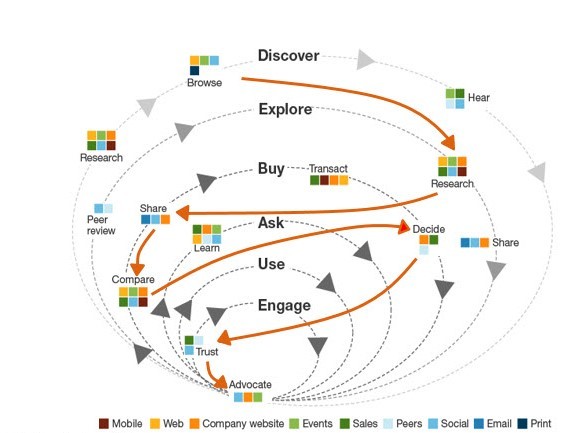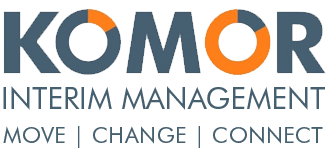Insights into the B2B shopping trip – Know YOUR customers
Know YOUR customers
This is still the most important task for marketing. Forrester Research has vividly depicted the B2B (Customer Journey). Have a look for yourself.
It’s still true that today’s buyers control their journey through the buying cycle much more than today’s vendors control the selling cycle. In a survey, 74% of business buyers told Forrester they conduct more than half of their research online before making an offline purchase. This buyer dynamic changes the role of B2B marketing in a fundamental way. But that’s where the prevailing knowledge about ‘today’s buyer’ will fail you.
The most important thing is: You gotta know YOUR buyer!
Build your marketing strategy on facts, not factoids
Headline grabbing B2B marketing factoids might be useful for vendors, but don’t make the mistake of running your marketing program on the averages. You need to engineer a cross-channel, engagement strategy to successfully engage with your buyers, who proactively seek the information they need — through digital and social channels, from peers, on YouTube, at events, and, yes, through your sales reps — to advance their decision process. And there’s no one right way to do this. Buyer journey mapping is a technique B2B marketers can use to understand your buyers’ path to purchase.

The B2B Buyer Journey
.
The customer will choose the channel
Some buyers prefer to engage with a sales rep who can help them create and evangelize a vision; other buyers want to educate themselves through professional contacts and peer-created content; and yet others are comfortable doing research on vendor websites. For certain common scenarios now, self-service eCommerce websites can serve B2B buyers more effectively than salespeople can. When engineering a channel strategy that needs the proper mix of digital and human touches, keep in mind that both message development and delivery are impacted by:
Solution & market maturity
B2B buyers thoroughly research their purchase decisions. Leveraging the large body of codified knowledge available for mature solutions, buyers conduct significant research before they engage with the vendor’s sales team. The opposite is true for products and services in new or emerging segments. Despite the rise of the self-educating buyer, business decision-makers still want to talk to salespeople for clarification when considering innovative or disruptive solutions. Sometimes, you need a person to connect the dots so that the customer gets it.
Buying process complexity
You don’t create value in the lab, the design studio, or the manufacturing plant; you create value when buyers use, implement, or consume your product or service. Today’s buyer knows that. Solutions that require significant process or cultural change result in longer buying cycles for two reasons: 1) They involve more stakeholders and 2) today’s savvy buyers create the value realization plan before they commit to an investment. Of course, this more complex buying process creates longer buying cycles and increases the need for sales and marketing to develop a collaborative customer engagement strategy.
So, the key to engineering the perfect mix of sales and marketing engagement? It’s the customer!
Source: Lori Wizdo, Forrester Research, Inc.






